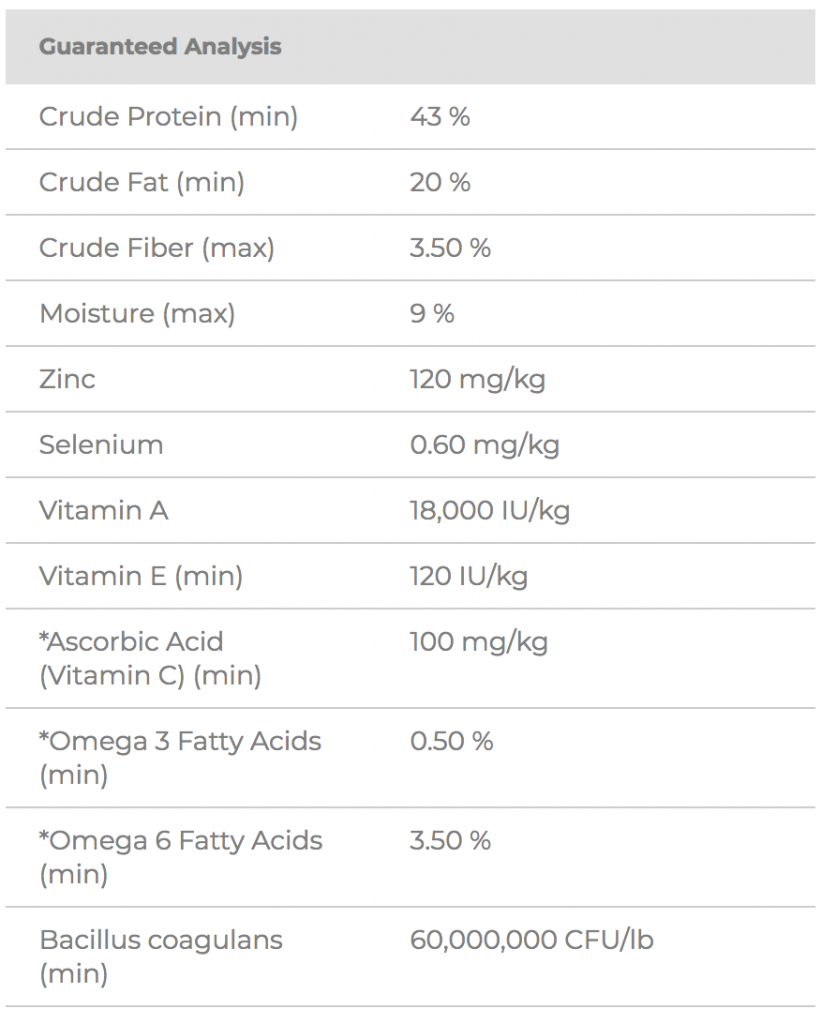Our database of cat foods contains over 2000 individual foods.
We collected all the relevant information on each product, including:
- AAFCO Rating
- Ingredient list
- Macronutrient profiles (Guaranteed Analysis, Dry-Matter Basis, and Caloric Basis)
- Price and price per pound
- Calories per 100 grams
- Whether meat is the first ingredient
- How each food compares to the average of all foods on a macronutrient basis
- Whether the recipe uses more than 4 controversial ingredients
Each of these data points works together to form a star rating on a 1-5 star scale (including half points).
- 1 star if meat is the first ingredient
- 1 star if the recipe does not used unnamed meats (i.e., they MUST label what animal the meat comes from)
- 1 star if the protein level is above average compared to all other foods in the database (0.5 stars if the protein level is average)
- 1 star if fewer than 4 controversial or low-quality ingredients are used (0.5 stars if exactly 4 are used)
- 1 star is for use at our own discretion (if the food comes very close to a natural diet, uses quality ingredients, and has a very good macronutrient profile, it will get 1 star. If it is mostly good, but misses in one or two places, it will get 0.5 stars. If it’s not at all biologically appropriate, it gets 0 stars.)
We think that this system provides a fair, transparent system by which we can compare all foods on an equal footing, and give you the easiest possible time when choosing the best of the best.
What To Look For In A Quality, Biologically-Appropriate Cat Food
Studies (here and here) on both indoor, commercially-fed cats, and feral and stray cats show that cats will self-select food sources that result in a macronutrient profile in this range (dry-matter basis used):
- Protein: 52-63%
- Fat: 22-36%
- Carbohydrate: 2.8-12% (with “wild” cats on the very low end of this range)
What we believe this shows is that cats have evolved to thrive on a high protein, moderate fat, and low carb diet.
We base our ratings and selections on this assumption.
You can use our formula above to determine exactly what to look for, but I’m going to break it down here, too.
First, meat must be the first ingredient, and it must be a named meat (i.e., “Chicken”, not “Meat by-product”).
Named meat is important, because unnamed meat is usually low quality, rendered meat product that may come from anything from 4-D farm animals (dead (not from slaughter), diseased, dying, and disabled), roadkill, zoo animals, and even euthanized cats and dogs.
Next, there should be few, if any, filler ingredients, like corn, rice, potato, and the like. Companies include these ingredients because they’re cheap, many can increase the protein content on the label, and some are used to help form dry food kibble pieces.
The food you choose should have a high protein content and a low carb content.
For a dry food, you should look for at least 40% protein on a guaranteed analysis basis, though the higher the better. Carbs are not required to be listed on cat food labels, but you can figure it by starting at 100 and subtracting the moisture content, protein, fat, fiber, and ash in the food. The result should be as close to 0 as possible.
Here’s an example:
Formula to determine carbohydrate content of the above food example:
100 – Crude Protein – Crude Fat – Fiber – Moisture – Ash (if not listed, assume 8% for dry food and 2 or 3% for wet food) = Carbs
100 – 43 – 20 – 3.5 – 9 – 8 = 16.5% Carbs
You should also know what all the other “unnatural” sounding ingredients are doing in the recipe. We will be releasing a “Cat Food Ingredient Wiki” shortly, that breaks down every single ingredient we’ve ever found used in a cat food recipe.
These include things like guar gum, carrageenan, titanium dioxide, and more. Some of these “hard to pronounce” ingredients are controversial, or straight up bad, but some are vital minerals and vitamins. It can be hard to tell which is which!
(That’s another reason we’ve gone through and rated each food, and provided information on their ingredients.)
We would never recommend a food with more than 4 controversial ingredients, and most of our foods have one or no controversial ingredients.
In our individual reviews of each food, we break down the ingredient list for you, so if you’d like to dig into it more before our Ingredient Wiki is released, check out each food’s review, which we link to under each recommendation that follows.


